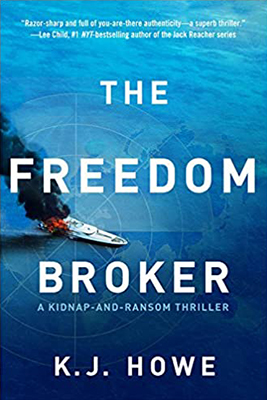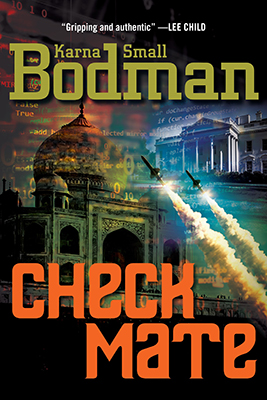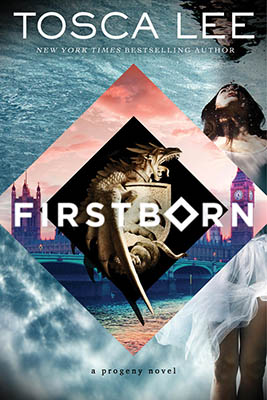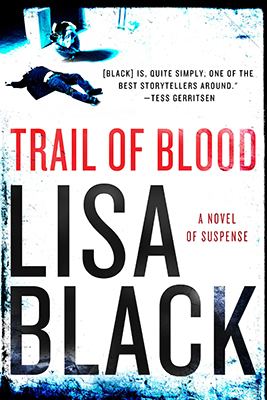By Francine Mathews
The phrase “President’s Daily Briefing” has suddenly dropped into the national dialogue since the election of Donald J. Trump as the 45th president of the United States. Its existence for years was secret, but as nothing is sacred to the twenty-four hour digital news cycle, the term is now freely tweeted by Cabinet members and armchair pundits alike. Often referred to by insiders as simply “the Book,” or by its initials as the PDB, the daily intelligence digest delivered to the chief executive has evolved in scope, format and platform since its postwar birth–primarily as a result of the individual demands of successive presidents and their varying appreciation of intelligence analysis.
The PDB’s impact and evolution is beautifully mapped and explicated by David Priess in The President’s Book of Secrets: The Untold Story of Intelligence Briefings to American’s Presidents From Kennedy to Obama (New York: Public Affairs, 2016). Kennedy’s desire to refer to a pithy intel digest he could carry in his pocket–particularly when he spent weekends in Warrenton, VA on wife Jackie’s leased horse farm–helped to shape the Book’s origins. Nixon, who believed the CIA had been plotting his ruin for years, had little time, trust, or interest in the daily brief–a judgment reinforced by the Agency’s failure to predict Egypt’s invasion of Israel on October 6, 1973. Jimmy Carter asked for more “divergent views” in the analysis, rather than consensus opinion, while his National Security Advisor, Zbigniew Brzezinski, faulted it for lacking “broad, sweeping, bold insights into the future”–particularly as related to Carter’s bete-noire, Iran.
President Reagan’s decision to elevate his CIA Director, William Casey, to Cabinet level blurred the divide between policy-support (intelligence’s vital role) and policy-formulation, leading some consumers of the book, such as Secretary of State George Schultz, to view the analytic judgments as too politicized. George H.W. Bush, whom Priess calls “The Spymaster President,” reverted to subordinating his DCI to the Cabinet and stressed the need for analytic objectivity. Bush relished his time with the Book–it was the first thing he saw each morning–and made a habit of posing follow-up questions to his CIA briefer. The professorial Obama shifted the format from print to digital delivery on a tablet, with links to supporting documents he could read in depth. The most telling response he offered his briefers when they leaned forward to speak? “Let me read.”
Much of the content of the Book over the decades remains classified, of course, and so Priess’s accounts often glide past the substance of briefings to focus on the process. Nonetheless, one of the most compelling passages is his description of PDB briefers’ experiences on September 11, 2001, as planes flown by terrorists plummeted through the Pentagon and World Trade Center: a brutal metaphor for the collision between analysis and Ground Truth. The creation of the post of Director of National Intelligence after 9/11 has led to the latest tweak in the PDB–it is now a community product overseen by the Office of the DNI, and reflects the coordination and consensus of the IC’s seventeen member-agencies.
Priess is an award-winning CIA intelligence analyst and a former PDB briefer himself, who worked under Presidents Clinton and George W. Bush. (Indeed, Bush penned the forward to this book in a way that is both a tribute to briefers and the affection that he, as a former Director of Central Intelligence, continues to feel for the security community.) Priess holds a doctorate from Duke in political science, and his primary aim in this work is to add to the growing field of studies in intelligence. He interviewed every living president and vice president, as well as more than one hundred other people involved in either the production or the consumption of the PDB. The resulting history is both erudite and anecdotal. For that reason alone, his book belongs on the shelf of any student of the security community or its interaction with successive administrations.
“You know, I’m, like, a smart person. I don’t have to be told the same thing in the same words every single day for the next eight years. Could be eight years — but eight years. I don’t need that,” Trump said. “But I do say, ‘If something should change, let us know.”
It is impossible to read The President’s Book of Secrets today without addressing the elephant in the room: What will be the fate of the President’s Daily Briefing during the current administration? The ascension of Donald J. Trump to the presidency, and the ambivalence he has displayed toward the Intelligence Community in recent weeks, suggests that it will certainly evolve again in format as well as delivery. Not surprisingly, the entire world has been asking David Priess for his views, from the New York Times to Fox News and MSNBC. David Priess was kind enough to answer a few questions for Rogue Women Writers:
 |
| Dr. David Priess, Gerald R. Ford Presidential Library |
RWW: In relating the transition of the “book” from its inception under JFK to the present, you make clear that it has evolved according to each president’s briefing needs and personal style of engagement with the material. But an underlying theme is the fact that a president’s degree of trust in the CIA’s collection and analytic judgments determines his willingness to entertain intelligence briefings at all–with Richard Nixon being the most aloof and George H.W. Bush perhaps the most welcoming. How do you expect the PDB to evolve under the incoming administration?
DP: Nixon did, indeed, forgo in-person intelligence briefings during his time in office–but that’s the norm, rather than the exception, across the history of the President’s Daily Brief. Only Ford (for one year) and the Bushes (for all of their respective terms) took in-person PDB briefings each working day; other took briefings irregularly or not at all.
DP: If the point of the President’s Daily Brief were only to present up-to-the-minute facts to the president, then this might be a concern. The daily intelligence book can include such timely information, of course, but the bulk of the PDB across the decades has been analysis–which could have been many hours, days, or even weeks in the making. The advantage of having a briefer in the room comes much less from his or her ability to deliver late-breaking updates than from his or her ability to answer questions, discuss analytic nuances, or provide information that would not have come out without conversation.
DP: The PDB’s shift to ODNI management certainly expands the potential analytic contributions for the president. Perspectives that might not have made it into the book back in the days when it was written only by CIA analysts now regularly appear, giving the PDB’s readers a wider perspective than they had before. But the basic approach to providing assessments in the book appears to have stayed the same. As John Negroponte, the first DNI, told me, “I’ll be damned if I can tell you that it’s really that different” because of ODNI management.
DP: Regardless of who edits and manages it, the President’s Daily Brief serves a useful purpose that any president should find helpful: an objective, timely, and hopefully accurate input that offers insights into foreign policy opportunities and national security threats. I have no doubt that the CIA would be able to handle the PDB’s management again should such a need arise.
DP: The president has said in interviews that he likes one-pagers and bullet-point lists more than 200-page reports. Such information is pure gold for the analysts writing for the PDB, the editors shaping its assessments, and the briefers delivering it to the commander-in-chief. For more than 50 years, the intelligence community has tailored the look and the content of the PDB to the current occupant of the Oval Office; there’s no reason to stop that now!

















































Great interview, and fascinating information for anyone interested in espionage and/or national security. Thanks, Francine.
Thanks for this explanation of the President's Daily Brief.I find it fascinating how it's actually produced. While I read this interview I thought how great to be a fly on the wall during those meetings. A thriller writer's dream. His book The Presidents Book of Secrets sounds like a great research tool for any author writing about the White House and its norms. I'm going to get it now. Thank you to Mr. Priess for agreeing to be interviewed, and thanks Francine!
Thanks so much, Mr. Priess – and also to Francine for bringing us this great analysis of the PDB — the history is fascinating and I'm sure his book will be a terrific resource — especially for thriller writers. Can't wait to order my own copy!
Wha a fascinating interview, Francine. Thank you to both of you for the inside look at such an important part of our intelligence delivery. I'm buying the book, too!
Glad you enjoyed the Post. This book is a terrific research tool for anyone interested individual presidents as well —
Great post. You really scored with this interview. A big thank you to Mr. Priess. I have no ordered a copy of his book for my shelf.
David, this is a fascinating look inside the PDB; thank you so much for sharing! I look forward to furthering my education with THE PRESIDENTS BOOK OF SECRETS.